Products (Stock Items)
A product is an item that will be sold in your shop or restaurant.
On the retail side it can be a can of coldrink or a hamper made up of several other products.
On the restaurant side it can be an item on your menu consisting of several sub items (ingredients).
Note: To create a service charge see Service Charge
Creating a new product
In ROBOTILL Back Office, in the 'Home' screen, go to 'Products and Stock' > Products. Click on the 'New' button to add a new product.
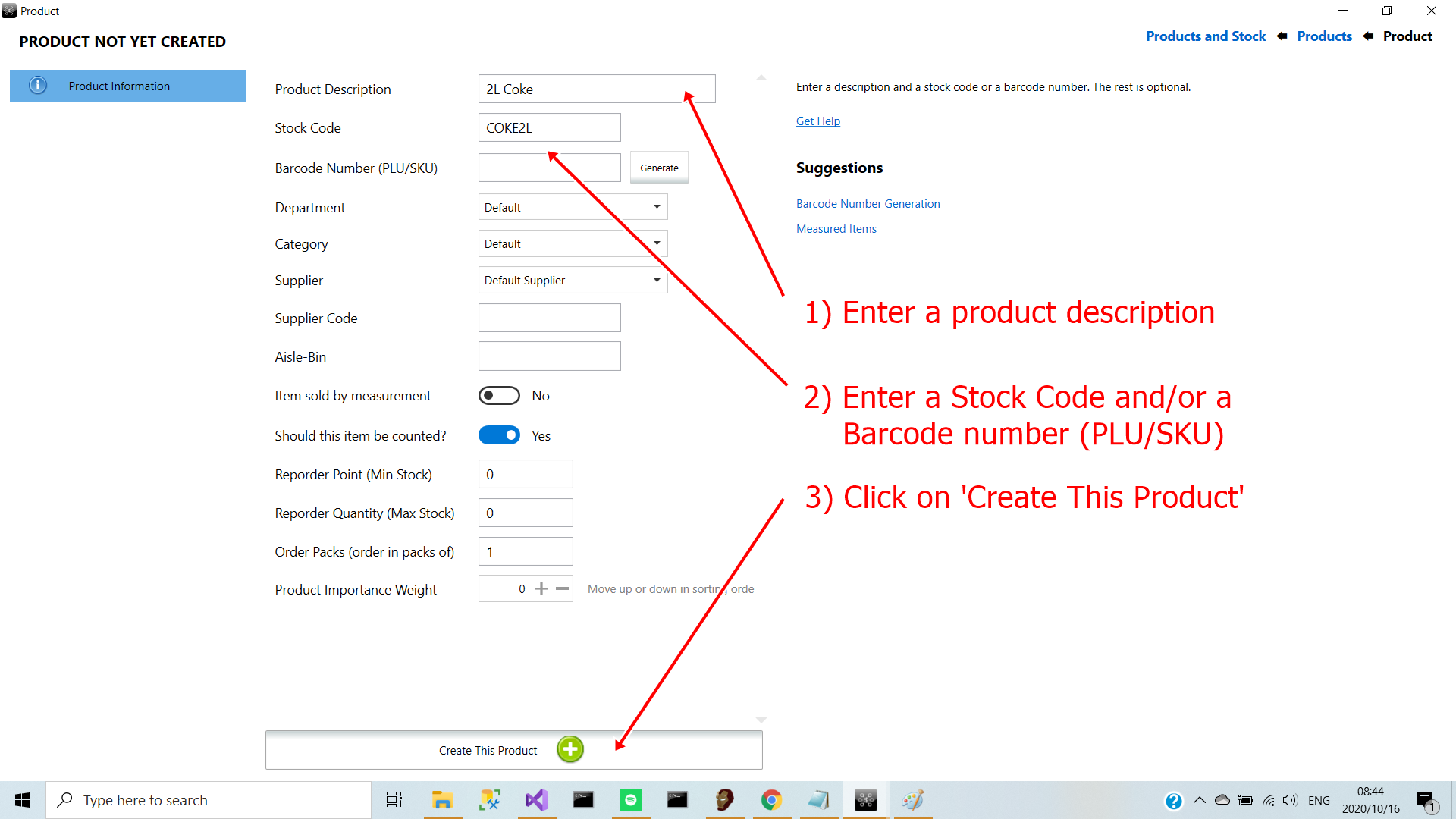
To create your product, enter a description and a stock code and/or barcode number (SKU/PLU). The rest is optional. Click on 'Create this product'.
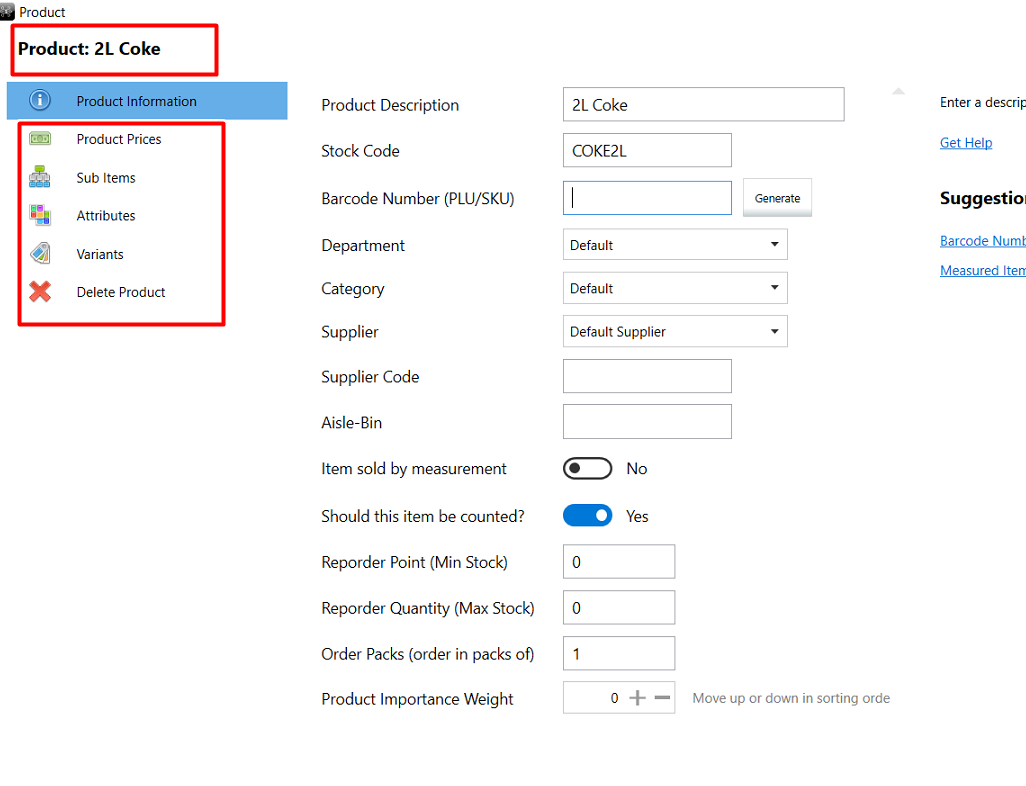
Once the product has been created you will notice the product description on top of the screen. You will also notice that there are now more
options available for this product. The 'Create Product' button will also be gone. There are no 'Save' buttons in ROBOTILL Back Office as
your changes are automatically saved as you work.
You can now enter the rest of the details required for your product. All other product settings are optional but you should at least specify the price.
Main Product Information
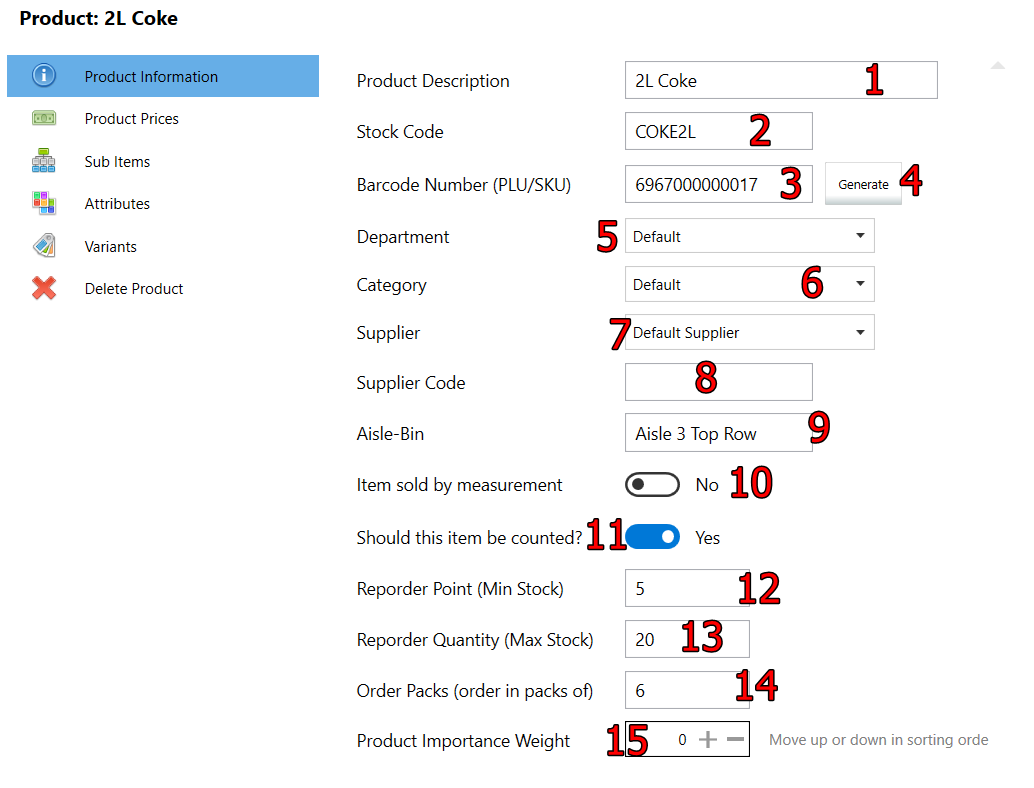
- The product name or description.
- The product code. If you don't have a specific code for the product you can just use a shorter version of the description that will still be unique.
- The barcode number - PLU/SKU.
- If the product does not already have a barcode number, you can generate your own numbers that can be printed and scanned. See
Barcode Generation.
- Select a department.
- Select a category.
- Select a supplier.
- If the product code that the supplier uses is different to the code you are using, you can specify the supplier product code.
- The Aisle-Bin field is where the product is located within the store. The field is optional but is helpful if a customer asks a cashier where a specific product is. The cashier can then do a 'Product Lookup' (Menu > 'Product Lookup') and the details of the product including the location of the product within the store will be displayed.
- If the item is sold by some type of measurement, select this option. See Measured Items.
- Select this option if the system should keep track of how much stock of the specific product is on hand.
- Reorder Point (ROP). If this stock level is reached you would want to order more stock. This is your minimum stock level for this product.
- Reorder Quantity. This is the level of stock you would want for this product after you ordered stock. With other words the stock you order will be 'Reorder Qty' - 'Current Stock on Hand'.
- Some items are packaged (boxed or shrink wrapped) for transport and delivery in a certain quantity and you can only order in multiples of that quantity. Note that if you order packs (containers/bottles/boxes), you should rather use
Compound items
. If however you order in single units but you need to order in a multiples of a specific quantity, then you can use Order Packs
- Product Importance Weight allows you to change the order the items are listed. By default products are listed alphabetically. If you want to move a product up to the beginning of the list because it is often used, you can increase the importance weight. Products does not need to have sequential weighting. You could for example give items you want on the top of the list a value of 2 and other items that are often used a value of 1.
Product Prices
Note: For a service charge see Service Charge
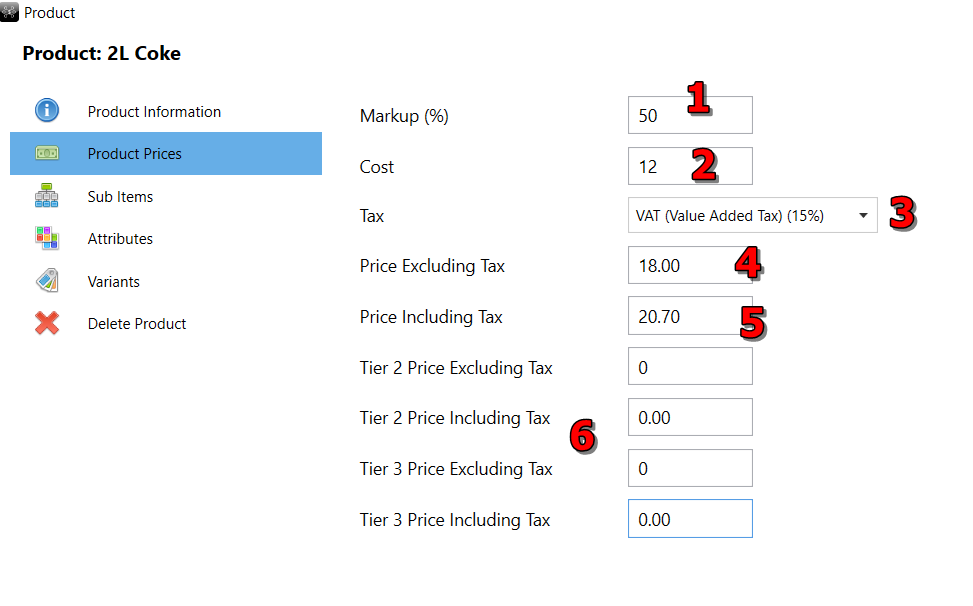
- In set up you can
choose between using profit margin and markup.
You can also choose a default profit margin or markup. If you change the markup/profit margin or the cost of the product the product price will automatically be calculated.
- The cost to your company for purchasing or creating the product. Also see
Product Cost
- Select a tax item for this product. See
Tax Setup to add or change tax options.
- The item price is the price excluding tax. You can enter either the price excluding or the price including tax.
- The price including tax. You can enter either the price excluding or the price including tax.
- You can optionally specify additional price tiers for the product. See Price Modes and Price Tiers
Sub Items
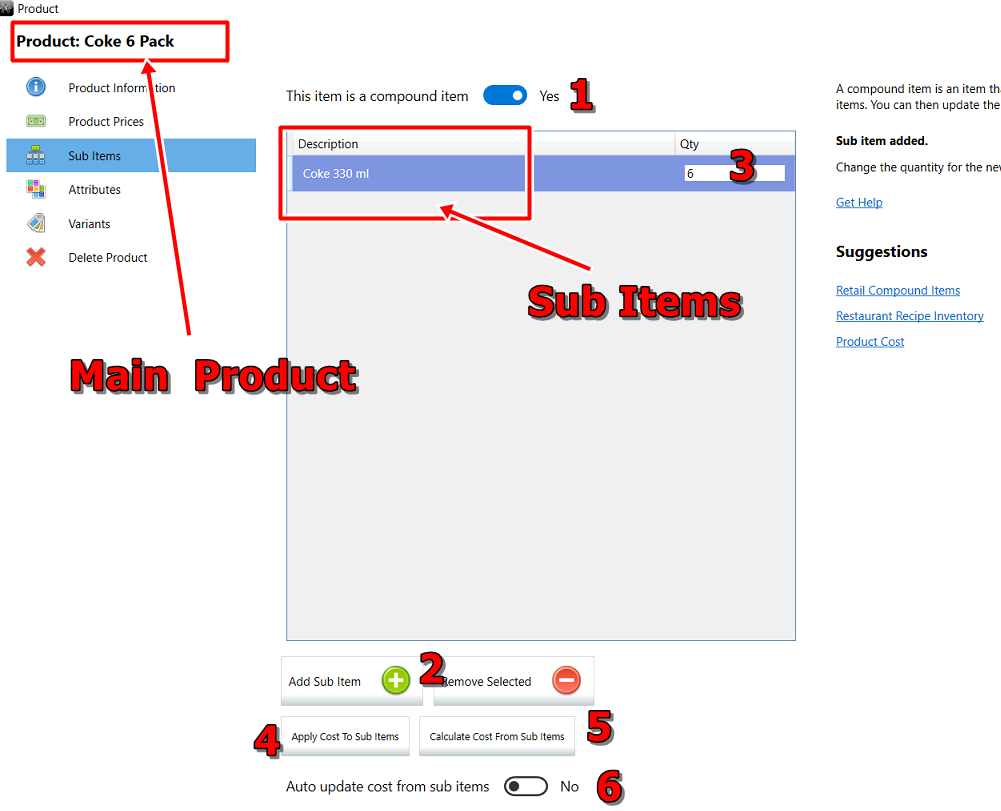
- If this product consists of other products that should also be counted and could optionally also be sold on their own, then you can select the product as a compound item (item made up of other items).
- Add the sub items for this product (you will first need to create those items separately as products).
- Change the number of that specific sub item in the grid.
- If the product consists of only one type of sub item, you can apply the main product cost to the sub item. The cost will be divided by the number of items you specified and the product cost of the sub item will be updated.
- You can calculate the main product cost from the sub items. The cost of all the sub items for this product will be added up and applied to the main product cost.
- If you select to auto-update the cost, if you change the product cost of any one of the sub items for this product, then the product cost of this main product will automatically be calculated and updated.
For more on compound items see:
Attributes
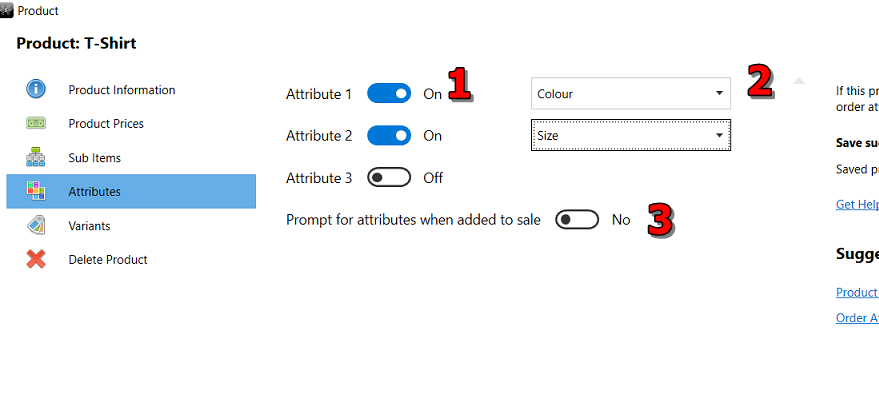
- If you want to link attributes to this product, select the number of attribute groups you want to add
(you can add up to 3 groups per product). To create an attribute group see Attributes
- Select the attribute group.
- If you want to use attributes to create variants for this product, then select no. If these attributes will be used for order attributes, select yes.
Product attributes are either used to set up variants for the product attributes or to add attributes to an order.
For more information see:
Product Variants
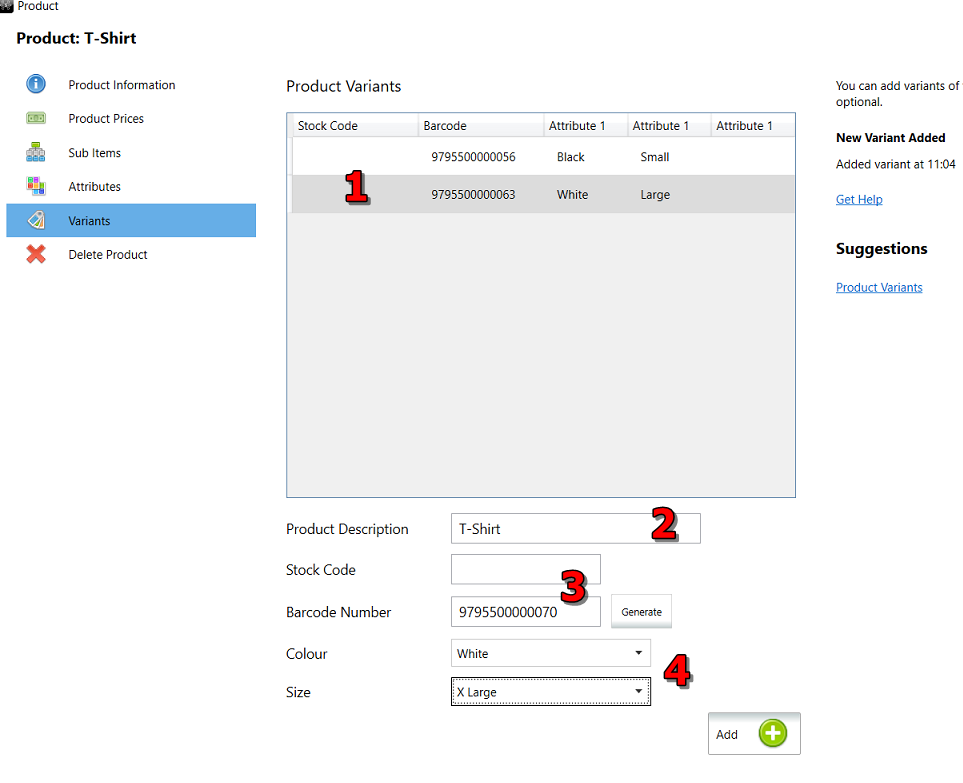
- You can add any number of variants that are linked to the product. Each variant will have the same price and settings as the main product but with its own stock count.
- The variant can have the same description as the main product or you can give each variant its own description.
- Each variant must have its own unique stock code or/and barcode number.
- You can select the attributes for this variant. The attribute groups must be enabled in the attribute section of the product set up.
For more on variants see Product Variants